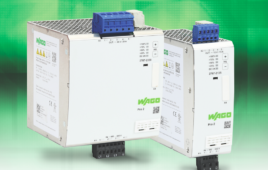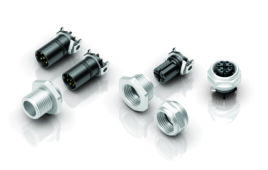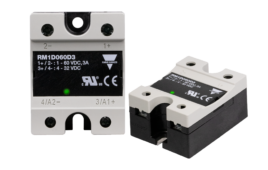The consumer electronics market is expected to generate over $165 billion in revenue within the U.S. in 2010, thanks to cell phones, laptops, digital cameras, DVRs, and MP3 players. The sensitive components such devices contain require precise handling during manufacturing. The consumer electronic supply chain with its clean room requirements is growing and clean room robotics will play a key part in this growth. Following is a quick guide to all things clean when it comes to robots.

Clean rooms are classified according to the number and size of the particles permitted per volume of air. For example, a Class 10 clean room denotes that no more than ten particles of 0.5 µm or larger and zero particles of 5.0 or larger are permitted per square foot of air. Contaminants come from people, process, facilities, and equipment. In order to control contaminants that are invisible to the human eye, the manufacturing cell and in many cases the entire room must be controlled. Robots used in this environment must meet stringent clean room certification requirements to prevent them for acting as a source of contamination.
Much of the hardware used in a clean room robot is the same as any other robot with the important exception of a combination of sealed covers to prevent particles from escaping the robot, stainless steel hardware, proper non-gassing lubricants and vacuum to evacuate any internally generated particles. Robots for clean room processes have special considerations for harnesses, . . . “which can be a serious particulate generator and a major design challenge for clean applications,” said Scott Klimczak president of CHAD Industries, a pioneer in the area of wafer and substrate handling WLP I (Wafer Level Packaging) applications.
As a matter of practice, materials prone to particle generation are substituted or coated to eliminate the potential for contamination.
Certification is done by counting the number of particles generated when the robot is in motion. For this process the industry uses particle counters that are calibrated to meet or exceed the standards set by NIST (National Institute of Standards and Technology). In addition to NIST traceable practices, other standards of particle counter calibration include Japanese Industrial Standard (JIS) B 9921, Light Scattering Automatic Particle Counter, and ASTM F 328-98, Standard Practice for Calibration of an Airborne Particle Counter Using Monodisperse Particles. Adept Technology, Inc. a leading manufacturer of clean room robots tests robots both internally and through third party testing and certification to ensure integrators and end-users deploy their equipment appropriately to meet manufacturing cleanliness requirements.
There are two accepted clean room specifications, the ISO 14644-1 spec and the Fed 209E spec.
Depending on the cell design and the robot style selected, a lower class robot may be used and still meet the overall system requirements if the system is designed appropriately. For example, for a semiconductor wafer application, if a robot can operate under the wafer with a vertical laminar flow of clean air present sweeping the particles away from the product, the ultimate requirement for the robot may be less stringent.

Installing the clean room robot requires attention to cleanliness. “Robots built for Class 1 environments are wrapped in several layers to protect them as they are shipped to the site,” said Kevin Lonie, application sales manager for Clear Automation, a Connecticut based automation integrator specializing in the design, engineering, fabrication and installation of integrated robotic and machine vision systems. “Then at the site the equipment is moved through progressively cleaner spaces as the wrapping is wiped down and finally removed before entering its ultimate clean room destination.”
Once wiped down with clean room wipes to remove any foreign particles, it is a good practice to connect the robot to the plant’s vacuum system and evacuate the robot for several hours to make sure all particles are purged completely.
Adept Technology, Inc.
www.adept.com
::Design World::
Filed Under: Mechatronics, ELECTRONICS • ELECTRICAL





Tell Us What You Think!